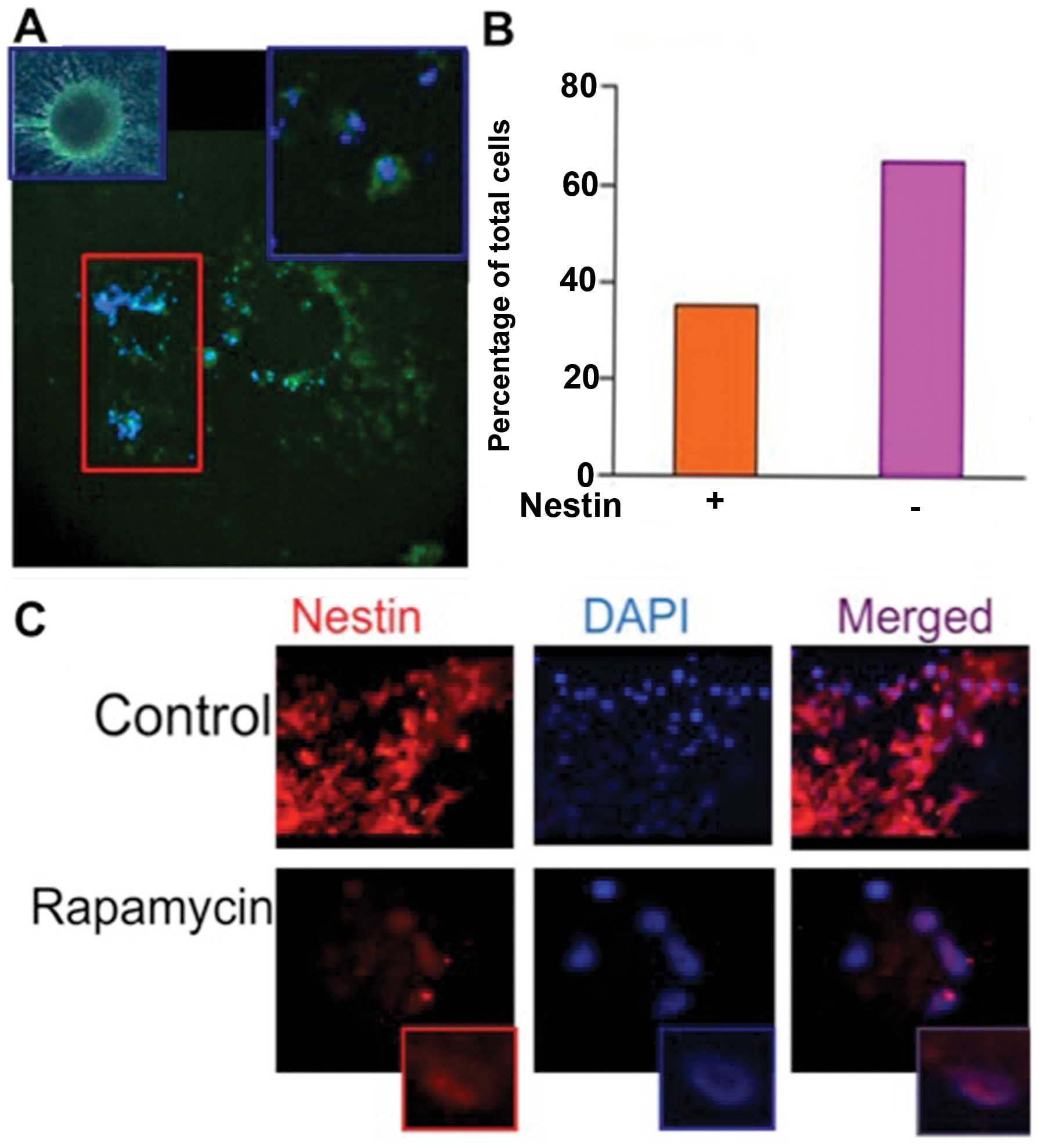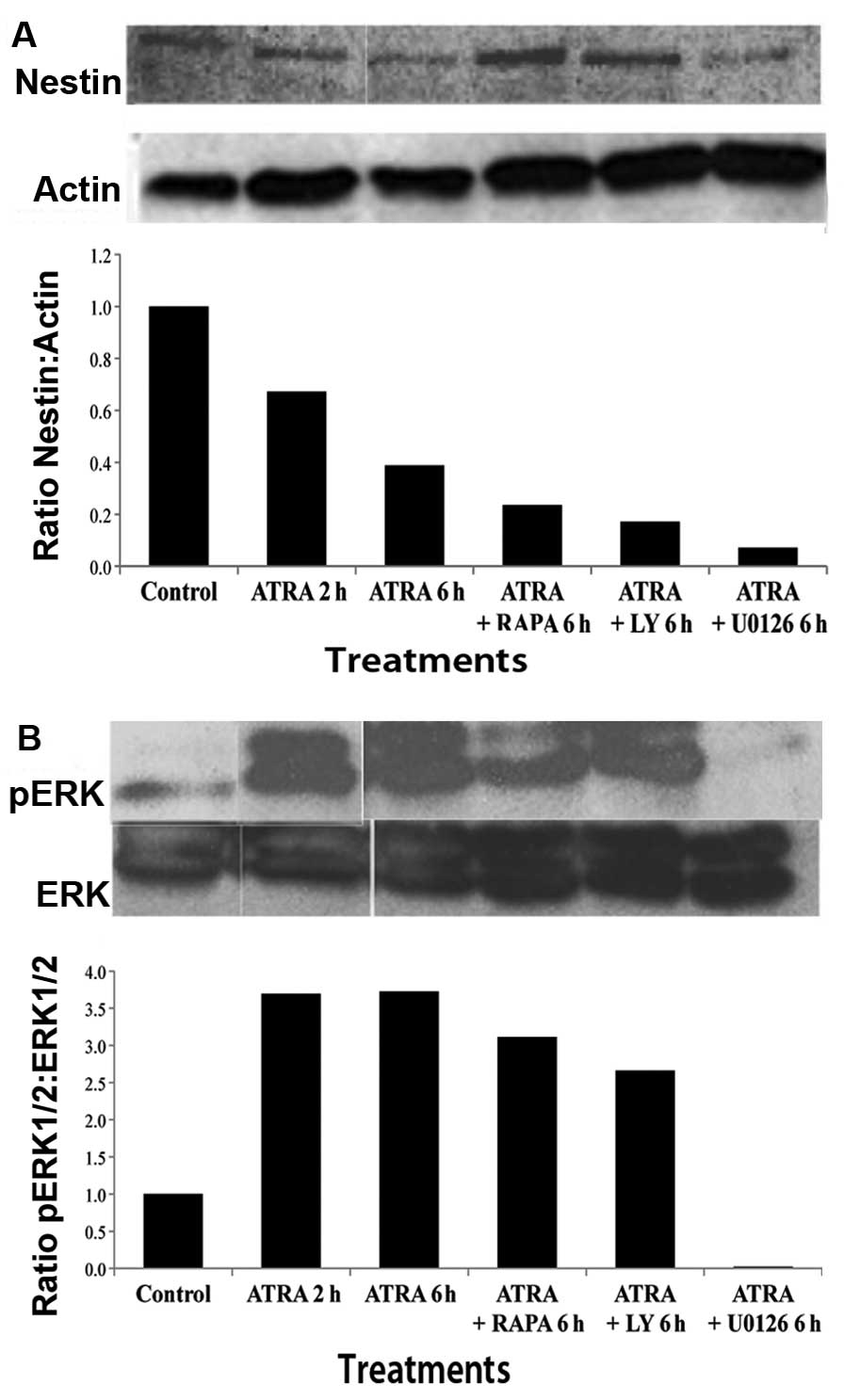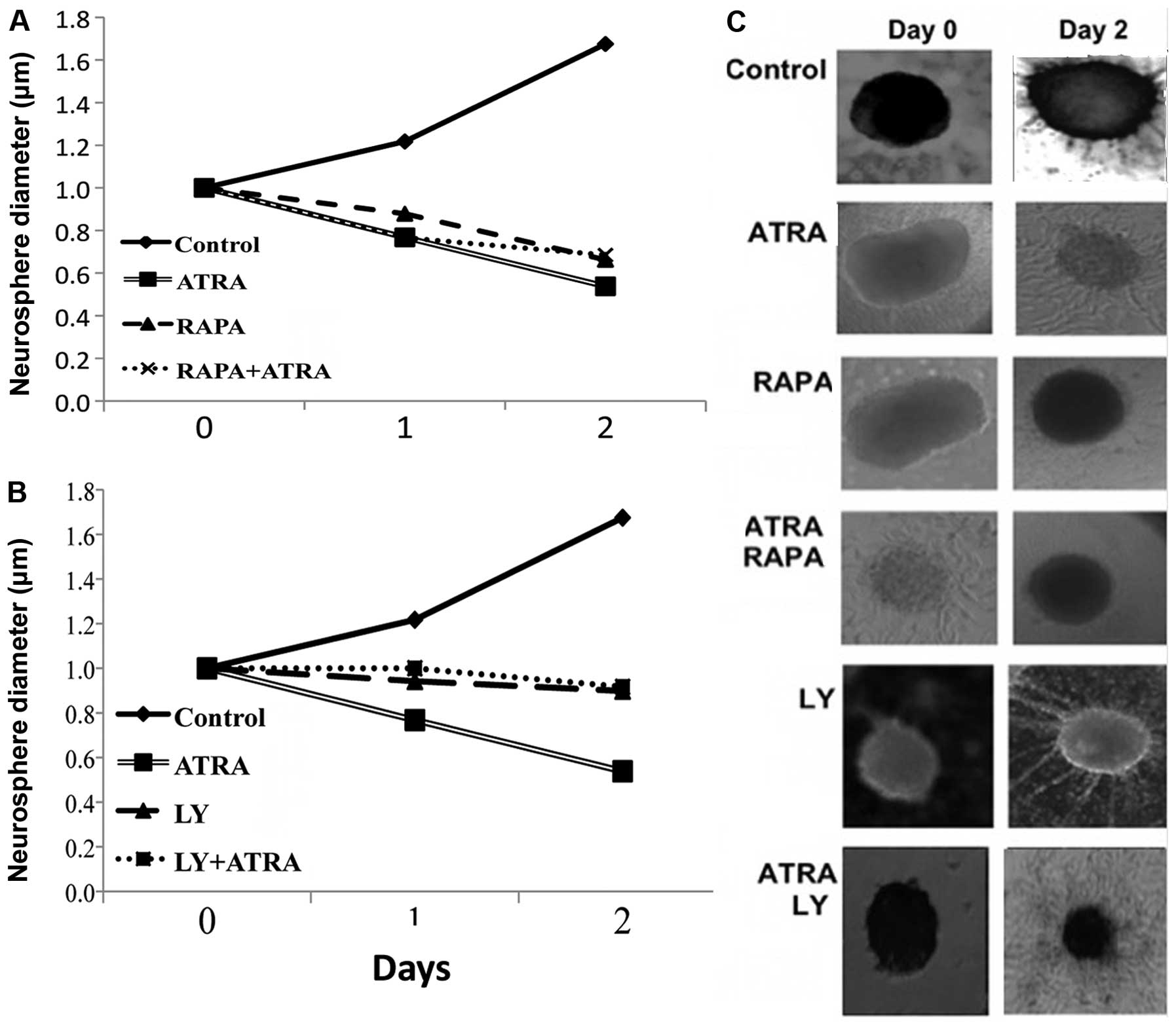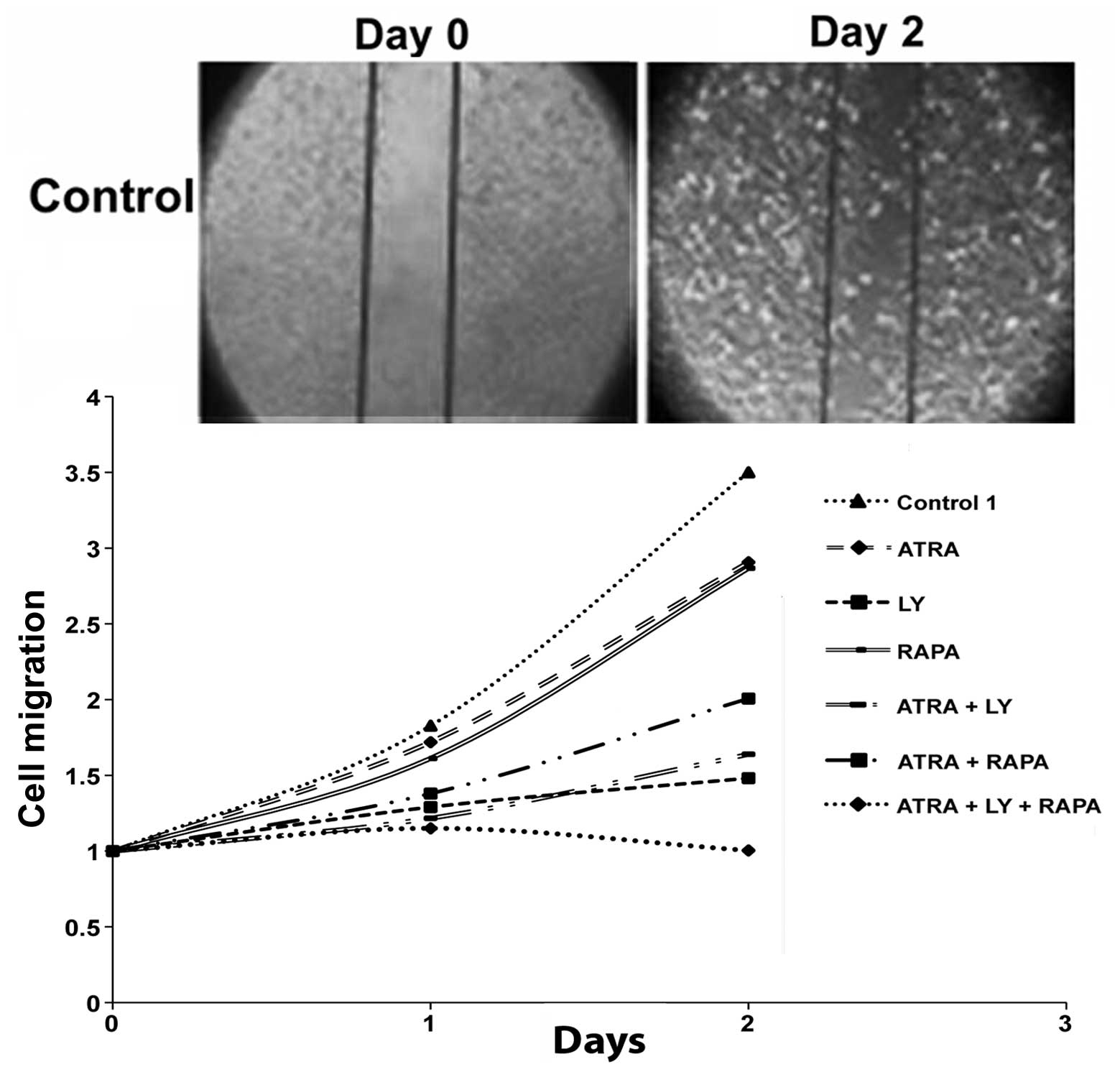|
1
|
Lawrence YR, Mishra MV, Werner-Wasik M,
Andrews DW, Showalter TN, Glass J, et al: Improving prognosis of
glioblastoma in the 21st century: who has benefited most? Cancer.
118:4228–4234. 2012. View Article : Google Scholar : PubMed/NCBI
|
|
2
|
Wiedemeyer R, Brennan C, Heffernan TP,
Xiao Y, Mahoney J, Protopopov A, et al: Feedback circuit among INK4
tumor suppressors constrains human glioblastoma development. Cancer
Cell. 13:355–364. 2008. View Article : Google Scholar : PubMed/NCBI
|
|
3
|
Ohgaki H and Kleihues P: Genetic pathways
to primary and secondary glioblastoma. Am J Pathol. 170:1445–1453.
2007. View Article : Google Scholar : PubMed/NCBI
|
|
4
|
Endersby R and Baker SJ: PTEN signaling in
brain: neuropathology and tumorigenesis. Oncogene. 27:5416–5430.
2008. View Article : Google Scholar : PubMed/NCBI
|
|
5
|
Holland EC, Hively WP, DePinho RA and
Varmus HE: A constitutively active epidermal growth factor receptor
cooperates with disruption of G1 cell-cycle arrest pathways to
induce glioma-like lesions in mice. Genes Dev. 12:3675–3685. 1998.
View Article : Google Scholar
|
|
6
|
Galli R, Binda E, Orfanelli U, Cipelletti
B, Gritti A, De Vitis S, et al: Isolation and characterization of
tumorigenic, stem-like neural precursors from human glioblastoma.
Cancer Res. 64:7011–7021. 2004. View Article : Google Scholar : PubMed/NCBI
|
|
7
|
Sanai N, Alvarez-Buylla A and Berger MS:
Neural stem cells and the origin of gliomas. N Engl J Med.
353:811–822. 2005. View Article : Google Scholar : PubMed/NCBI
|
|
8
|
Singh SK, Hawkins C, Clarke ID, Squire JA,
Bayani J, Hide T, et al: Identification of human brain tumour
initiating cells. Nature. 432:396–401. 2004. View Article : Google Scholar : PubMed/NCBI
|
|
9
|
Ignatova TN, Kukekov VG, Laywell ED,
Suslov ON, Vrionis FD and Steindler DA: Human cortical glial tumors
contain neural stem-like cells expressing astroglial and neuronal
markers in vitro. Glia. 39:193–206. 2002. View Article : Google Scholar : PubMed/NCBI
|
|
10
|
Jhanwar-Uniyal M, Albert L, McKenna E,
Karsy M, Rajdev P, Braun A and Murali R: Deciphering the signaling
pathways of cancer stem cells of glioblastoma multiforme: role of
Akt/mTOR and MAPK pathways. Adv Enzyme Regul. 51:164–170. 2011.
View Article : Google Scholar : PubMed/NCBI
|
|
11
|
Manning BD and Cantley LC: AKT/PKB
signaling: navigating downstream. Cell. 129:1261–1274. 2007.
View Article : Google Scholar : PubMed/NCBI
|
|
12
|
Jhanwar-Uniyal M, Jeevan D, Neil J,
Shannon C, Albert L and Murali R: Deconstructing mTOR complexes in
regulation of glioblastoma multiforme and its stem cells. Adv Biol
Regul. 53:202–210. 2013. View Article : Google Scholar : PubMed/NCBI
|
|
13
|
Sarbassov DD, Ali SM and Sabatini DM:
Growing roles for the mTOR pathway. Curr Opin Cell Biol.
17:596–603. 2005. View Article : Google Scholar : PubMed/NCBI
|
|
14
|
Gan B, Sahin E, Jiang S, Sanchez-Aguilera
A, Scott KL, Chin L, et al: mTORC1-dependent and -independent
regulation of stem cell renewal, differentiation, and mobilization.
Proc Natl Acad Sci USA. 105:19384–19389. 2008. View Article : Google Scholar : PubMed/NCBI
|
|
15
|
Das A, Banik NL and Ray SK: Retinoids
induced astrocytic differentiation with down regulation of
telomerase activity and enhanced sensitivity to taxol for apoptosis
in human glioblastoma T98G and U87MG cells. J Neurooncol. 87:9–22.
2008. View Article : Google Scholar
|
|
16
|
Guan K, Chang H, Rolletschek A and Wobus
AM: Embryonic stem cell-derived neurogenesis. Retinoic acid
induction and lineage selection of neuronal cells. Cell Tissue Res.
305:171–176. 2001. View Article : Google Scholar : PubMed/NCBI
|
|
17
|
Das A, Banik NL and Ray SK: Molecular
mechanisms of the combination of retinoid and interferon-gamma for
inducing differentiation and increasing apoptosis in human
glioblastoma T98G and U87MG cells. Neurochem Res. 34:87–101. 2009.
View Article : Google Scholar : PubMed/NCBI
|
|
18
|
Zhang R, Banik NL and Ray SK: Combination
of all-trans retinoic acid and interferon-gamma upregulated
p27(kip1) and down regulated CDK2 to cause cell cycle
arrest leading to differentiation and apoptosis in human
glioblastoma LN18 (pten-proficient) and U87MG (pten-deficient)
cells. Cancer Chemother Pharmacol. 62:407–416. 2008.
|
|
19
|
Haque A, Das A, Hajiaghamohseni LM,
Younger A, Banik NL and Ray SK: Induction of apoptosis and immune
response by all-trans retinoic acid plus interferon-gamma in
human malignant glioblastoma T98G and U87MG cells. Cancer Immunol
Immunother. 56:615–625. 2007.PubMed/NCBI
|
|
20
|
Defer GL, Adle-Biassette H, Ricolfi F,
Martin L, Authier FJ, Chomienne C, et al: All-trans retinoic
acid in relapsing malignant gliomas: clinical and radiological
stabilization associated with the appearance of intratumoral
calcifications. J Neurooncol. 34:169–177. 1997. View Article : Google Scholar
|
|
21
|
Clark MJ, Homer N, O’Connor BD, Chen Z,
Eskin A, Lee H, et al: U87MG decoded: the genomic sequence of a
cytogenetically aberrant human cancer cell line. PLoS Genet.
6:e10008322010. View Article : Google Scholar : PubMed/NCBI
|
|
22
|
Diserens AC, de Tribolet N, Martin-Achard
A, Gaide AC, Schnegg JF and Carrel S: Characterization of an
established human malignant glioma cell line: LN-18. Acta
Neuropathol. 53:21–28. 1981. View Article : Google Scholar : PubMed/NCBI
|
|
23
|
Mangiola A, Lama G, Giannitelli C, De
Bonis P, Anile C, Lauriola L, et al: Stem cell marker nestin and
c-jun NH2-terminal kinases in tumor and peritumor areas of
glioblastoma multiforme: possible prognostic implications. Clin
Cancer Res. 13:6970–6977. 2007. View Article : Google Scholar
|
|
24
|
Lendahl U, Zimmerman LB and McKay RD: CNS
stem cells express a new class of intermediate filament protein.
Cell. 60:585–595. 1990. View Article : Google Scholar : PubMed/NCBI
|
|
25
|
Roskoski R: ERK1/2 MAP kinases: structure,
function, and regulation. Pharmacol Res. 66:105–143. 2012.
View Article : Google Scholar : PubMed/NCBI
|
|
26
|
Albert L, Karsy M, Murali R and
Jhanwar-Uniyal M: Inhibition of mTOR activates the MAPK pathway in
glioblastoma multiforme. Cancer Genomics Proteomics. 6:255–261.
2009.PubMed/NCBI
|
|
27
|
Sunayama J, Matsuda K, Sato A, Tachibana
K, Suzuki K, Narita Y, et al: Crosstalk between the PI3K/mTOR and
MEK/ERK pathways involved in the maintenance of self-renewal and
tumorigenicity of glioblastoma stem-like cells. Stem Cells.
28:1930–1939. 2010. View
Article : Google Scholar : PubMed/NCBI
|
|
28
|
Wang B, Gao Y, Xiao Z, Chen B, Han J,
Zhang J, et al: Erk1/2 promotes proliferation and inhibits neuronal
differentiation of neural stem cells. Neurosci Lett. 461:252–257.
2009. View Article : Google Scholar : PubMed/NCBI
|
|
29
|
Sato A, Sunayama J, Matsuda K, Seino S,
Suzuki K, Watanabe E, et al: MEK-ERK signaling dictates DNA-repair
gene MGMT expression and temozolomide resistance of stem-like
glioblastoma cells via the MDM2-p53 axis. Stem Cells. 29:1942–1951.
2011. View
Article : Google Scholar : PubMed/NCBI
|
|
30
|
Gulati N, Karsy M, Albert L, Murali R and
Jhanwar-Uniyal M: Involvement of mTORC1 and mTORC2 in regulation of
glioblastoma multiforme growth and motility. Int J Oncol.
35:731–740. 2009.PubMed/NCBI
|
|
31
|
Shimizu T, Tolcher AW, Papadopoulos KP,
Beeram M, Rasco DW, Smith LS, et al: The clinical effect of the
dual-targeting strategy involving PI3K/AKT/mTOR and RAS/MEK/ERK
pathways in patients with advanced cancer. Clin Cancer Res.
18:2316–2325. 2012. View Article : Google Scholar : PubMed/NCBI
|
|
32
|
Galanis E, Buckner JC, Maurer MJ,
Kreisberg JI, Ballman K, Boni J, et al: Phase II trial of
temsirolimus (CCI-779) in recurrent glioblastoma multiforme: a
north central cancer treatment group study. J Clin Oncol.
23:5294–5304. 2005. View Article : Google Scholar : PubMed/NCBI
|


















